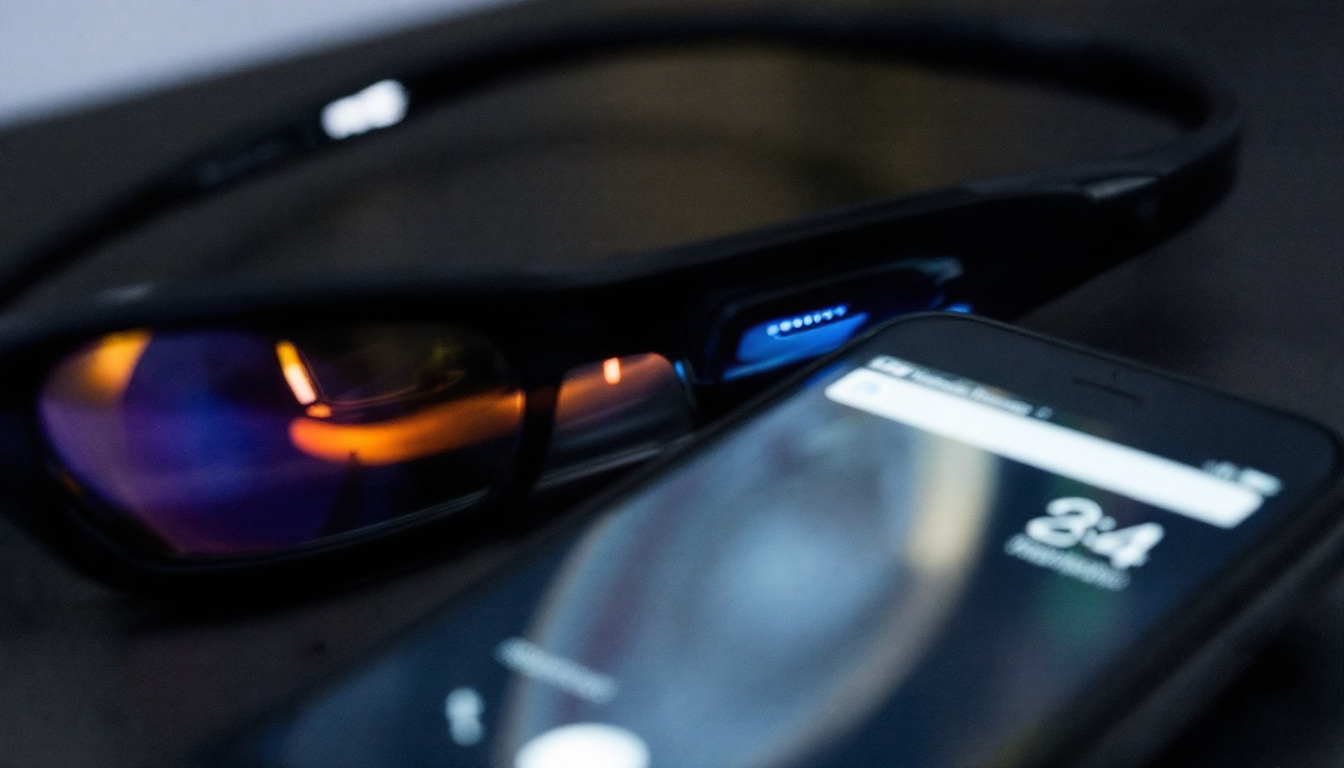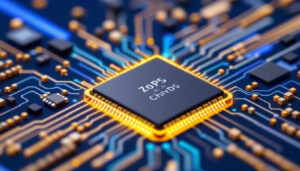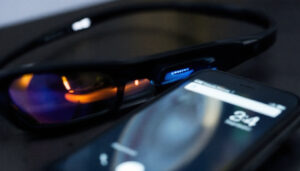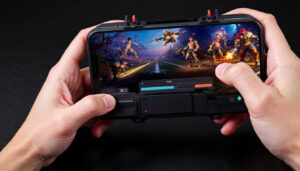Wireless charging has moved from concept to commonplace in just a few years, transforming how devices are powered at home and at work. For IT professionals and electronics buyers, the selection process is not just about convenience or price. Choosing the right wireless charging pad means evaluating important details such as technical standards, safety, speed, and compatibility. This guide draws on current data and industry expertise to clarify what matters most before making a purchase. By the end, readers will have a clear understanding of the features and trade-offs to consider, backed by research and practical examples relevant to professionals in tech and business. For an in-depth look at how wireless charging stacks up in modern devices, see this recent feature analysis of iPhone 2025 and Android phones.
Understanding Wireless Charging Technology
 Photo by Rann Vijay
Photo by Rann Vijay
Wireless charging has gained traction across phones, wearables, and accessories due to its promise of convenience. For IT departments and electronics decision makers, understanding the principles behind this technology is essential. Selecting the right wireless charging pad means weighing charging speeds, system compatibility, and safety, all rooted in the science behind wireless energy.
Fundamentals of Wireless Charging
At its core, wireless charging uses electromagnetic fields to transfer energy between two objects, removing the need for cables. Electrical energy is converted to an electromagnetic field by a transmitter coil, typically found in the charging pad. A receiver coil in the device collects this energy and re-converts it back to electricity.
- No cables: Energy is transferred through the air, not wires.
- Electromagnetic induction: The most common approach relies on the interaction between two coils.
- Proximity: Charging requires the device to sit directly on or near the pad.
For a technical breakdown, the process is straightforward: Place the compatible device on the pad; the coils align, and charging begins. The efficiency and safety of this handoff rest on the technology powering the system.
Inductive Charging Technology
Inductive charging is the leading technology in today’s wireless chargers. It relies on magnetic fields oscillating at low frequencies, transferring power efficiently when the coils are closely aligned. Most consumer chargers—especially for smartphones—use this method because it:
- Delivers reliable speeds: Well-suited for devices placed directly on the pad.
- Limits stray energy: Reduced risk of interference with other electronics.
- Promotes safety: Built-in safeguards against overheating and power surges.
Qi, pronounced “chee,” sets the global standard for inductive wireless charging. Most smartphones and small electronics now support Qi, ensuring broad device compatibility. For those managing a mixed fleet of devices, Qi compatibility simplifies sourcing and deployment.
A potential drawback is the need for close, precise alignment. Minor bumps or misplacement may disrupt charging or slow the process, which can frustrate users.
Resonant Wireless Charging
Resonant charging is a more flexible technology, designed for charging over a greater distance and within looser alignment. While still leveraging the principles of electromagnetic fields, it operates at higher frequencies, letting devices draw power even if not perfectly aligned with the charging pad.
Key benefits of resonant charging:
- Greater flexibility: Devices can be charged through thin surfaces or at short distances.
- Simultaneous charging: Multiple devices can be charged at once from a single pad.
- Broader device placement: The technology tolerates imperfect coil alignment.
However, resonant charging is less common in mass-market consumer products. Its efficiency drops as distance increases, and hardware costs are higher. For enterprise deployments or high-use environments, the flexibility can outweigh these limitations.
For a complete explanation of these wireless charging technologies and their power transfer methods, visit this detailed technical overview on how wireless charging works.
Impact on Charging Speed and Power Efficiency
Charging speed in wireless systems depends on several factors, including the technology used, coil size, and power output of the pad. Inductive charging typically offers fast speeds when the device and charger both support the latest Qi standards. Resonant pads may charge slower, especially if the device is not centered.
Efficiency also matters. Most wireless systems lose some energy as heat in transfer, particularly if alignment is off or if the device produces additional heat due to high power or a case. The lost power affects not just the time to reach a full charge but also device battery health over the long term.
Practical steps, such as using approved chargers and removing cases when charging, help minimize energy loss and maintain battery life. For Apple devices in particular, persistent battery drain can signal issues with charging setup or device thermal management. Those facing repeated charging problems should consult these proven tips for iPhone battery life.
For a deeper dive into how the two main technologies compare, see this summary of inductive vs. resonant wireless charging.
Standards and Compatibility
Universal charging pads follow open standards, most notably Qi, which means a single device can typically be used across various brands and hardware types. However, power output can differ from pad to pad, impacting both speed and safety.
A professional environment that mixes phones, earbuds, and wearables benefits from wireless charging systems that meet reliable, widely adopted standards. This strategy simplifies device management and reduces technical issues across teams.
Compatibility and Standards: Ensuring Your Devices Work
Device compatibility is the cornerstone of any wireless charging solution, especially in professional environments where hardware diversity is the norm. Choosing a pad that meets modern standards prevents hassles, maximizes efficiency, and reduces risk. This section describes current charging standards, why cross-device support matters, and what IT and electronics teams should prioritize when evaluating wireless charging equipment.
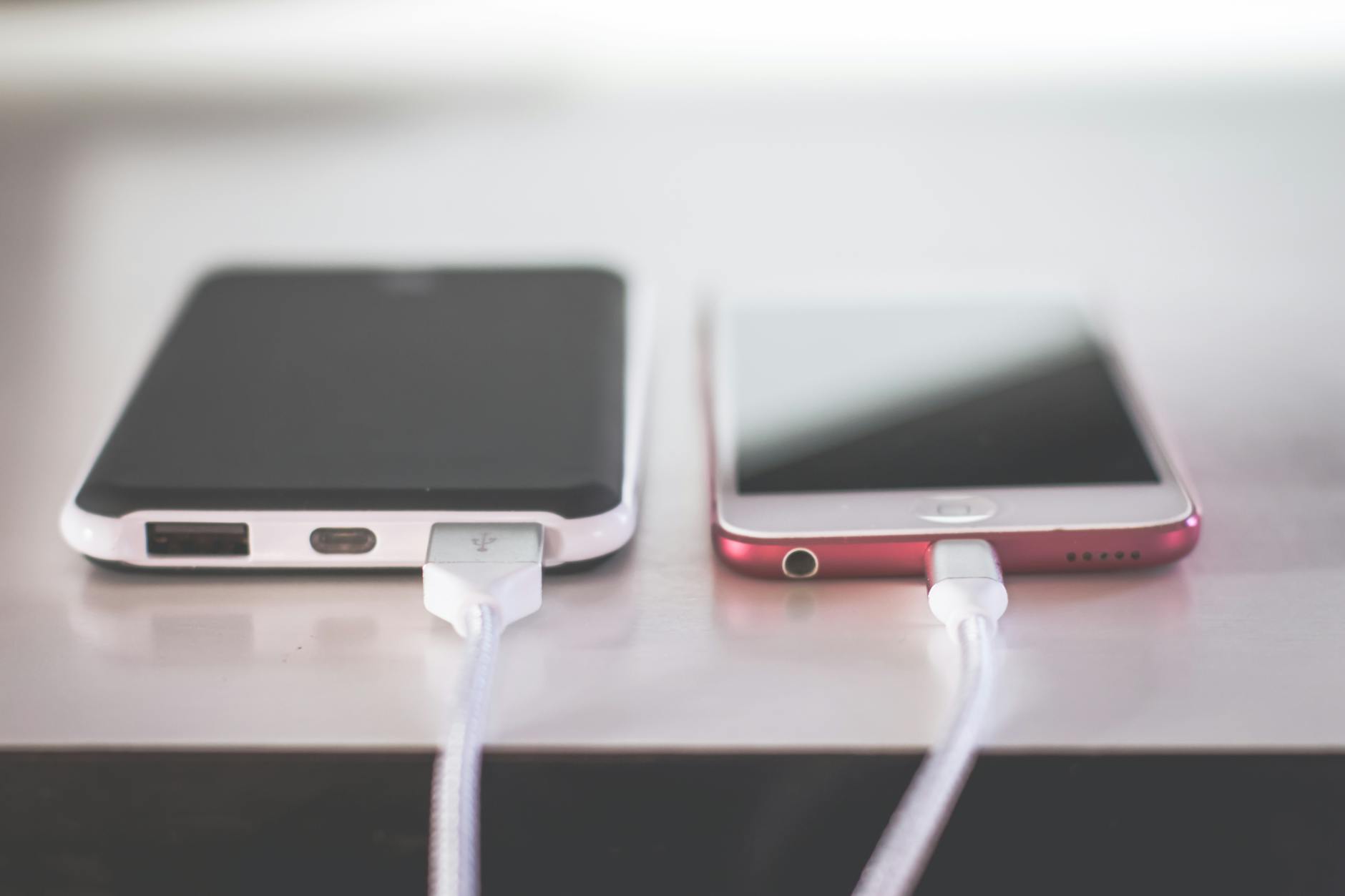 Photo by Steve Johnson
Photo by Steve Johnson
Qi Standard: The Universal Baseline
Qi is now the most widely adopted wireless charging standard across consumer and enterprise-grade devices. Developed by the Wireless Power Consortium, Qi creates a foundation for consistent, reliable wireless charging between brands and hardware generations.
- Cross-brand Device Support: Qi certification means iPhones, flagship Android phones, earbuds, and many accessories work with the same pad.
- Stable Power Delivery: As of Qi v2.0, the standard supports fast charging up to 15 watts and aims to unify wireless charging protocols, further reducing compatibility issues and user confusion.
- Global Ecosystem: With widespread industry backing, Qi pads appear in meeting rooms, offices, hotels, and transport hubs globally.
Deeper technical context on Qi and its evolution is available through the Qi (standard) entry and the official Wireless Power Consortium’s documentation. These resources offer insight into Qi’s progress and the features important for futureproofing your hardware purchases.
Proprietary Technologies: MagSafe and Beyond
While Qi leads the ecosystem, some brands layer proprietary enhancements atop the standard. Apple’s MagSafe system, for example, uses a precise magnet array combined with Qi charging to improve alignment and enable unique accessories.
- MagSafe for Apple: Provides up to 15W of power with Apple-certified pads and locks devices into perfect position for efficient charging.
- Samsung and Others: Certain Samsung models feature “Fast Wireless Charging” which also leverages Qi but optimizes the power curve for specific devices.
When choosing a pad, verify whether your office relies on proprietary systems. Some features—like Apple’s accessory support or Samsung’s faster speeds—only activate with matched hardware. Most modern charging pads remain backwards compatible with standard Qi features but read product specifications closely to confirm.
Multi-Device Charging and Cross-Brand Support
Offices and labs rarely standardize around a single brand or device type. Multi-device charging pads have risen in demand because they let users charge several phones, earbuds, or even wearables at once—without a cable tangle or slot juggling.
Key considerations include:
- Simultaneous charging: Some chargers, like 4-in-1 wireless chargers, let users power up to four devices at once.
- Flexible alignment: Multi-coil pads accommodate imperfect placement, which supports a mix of brands and device shapes.
- Different charging speeds: Devices draw varying energy, so check if the pad can deliver enough power to each port simultaneously.
The CATCH:2 Multi-device Wireless Charger demonstrates how current pads facilitate easier charging for mixed device fleets. Choosing a charger with wide support reduces user frustration and limits the need for constant troubleshooting.
Practical Importance for IT and Electronics Teams
Compatibility reduces help desk requests and hardware returns. Standard-driven pads simplify setups for conference rooms and workstations. If teams use hardware from Apple, Samsung, Google, and smaller vendors, selecting Qi-certified chargers means most devices will charge at optimal speed and safety.
For organizations closely comparing device fleets, the iPhone 2025 vs. top Android flagships feature analysis offers additional context, especially on how compatibility questions play out with the newest hardware in the workplace.
Keeping Pace with Ongoing Changes
Wireless charging standards evolve. As Qi2 and other advances expand wattage and efficiency, look for pads that explicitly list support for the latest versions. Avoid chargers with vague compatibility claims or those stuck on legacy standards.
Before finalizing a wireless charger, verify:
- Qi certification and listed protocol version
- Maximum supported charging speeds for each brand
- Ability to charge multiple devices without slowing significantly
- Any required proprietary hardware for full feature support
A disciplined compatibility check helps IT departments and business buyers prevent headaches down the line, keeping devices powered and teams focused on their work.
Key Features to Look for in a Wireless Charging Pad
Wireless charging pads have become more advanced and user-focused in recent years. Comparing features before purchasing is essential, especially for IT buyers and professionals who need products that balance performance, safety, and integration. This section explains the most significant features that set high-quality wireless charging pads apart in a competitive market.
Charging Speed and Power Output
 Photo by Rann Vijay
Photo by Rann Vijay
Charging speed indicates how quickly a device battery can move from empty to full. Most modern wireless pads support a range of charging speeds, often listed in watts (W). Fast wireless charging is now standard on leading models, with devices and pads supporting between 7.5W to 15W for smartphones. When choosing, confirm the pad can deliver the speed your devices support; if using a mix of brands, prioritize chargers with recognized Qi certification and clear power ratings.
Proper device alignment and up-to-date charging protocols play a part in real-world performance. To learn about techniques for optimizing speeds and ensuring fast wireless charging in a business setting, review this guide on how to optimize charging speeds with fast charge wireless charger pads.
Device Capacity and Multi-Device Charging
Capacity is a concern in offices where multiple devices need to charge at the same time. Top-tier pads now offer multi-device support, allowing several smartphones, earbuds, or wearables to charge at once. Look for:
- Number of charge zones: Some pads allow just one device, others may support up to four.
- Independent charging circuits: Ensures each device gets adequate power without speed drops.
- Flexible placement: Multi-coil designs permit more forgiving device positioning.
This feature is particularly useful for collaborative spaces or desk clusters, and for organizations managing a mixed fleet of hardware.
Build Quality and Durability
Materials and overall build play a key part in pad longevity and safety. Business-grade pads use high-quality plastics, metals, or leather for both durability and heat resistance. Features to assess include:
- Slip-resistant surfaces: Prevent device slippage and accidental misalignments.
- Cable management: Integrated solutions help organize wires, keeping workspaces tidy.
- Weight and footprint: A heavier, stable base increases safety on busy desks or communal tables.
When possible, check for third-party reviews or employee feedback to gauge long-term build reliability.
Thermal Management and Heat Dissipation
Effective heat management protects devices and maximizes charging efficiency. Wireless charging generates heat, and designs that include cooling vents, thermal pads, or smart temperature controls perform better over time.
- Passive cooling: Includes aluminum housings or non-slip silicone to channel away heat.
- Active monitoring: Some pads integrate sensors that pause charging if temperatures exceed safety levels.
Comprehensive thermal design not only extends charger and device lifespan but also reduces energy waste. For a technical breakdown of these principles, see the resource on thermal management in wireless charging.
Safety Certifications and Device Protection
Safety certifications indicate that a wireless pad meets current standards for fire safety, electrical insulation, and electromagnetic emissions. Common certifications include:
- Qi Certification: Issued by the Wireless Power Consortium.
- CE, FCC, UL, or RoHS marks: Required for equipment sold in the US and Europe.
Look for additional protection features such as automatic shutoff for foreign objects, surge protection, and overcurrent safeguards. These features help prevent hazards for both end users and IT assets.
Smart Integrations and User Convenience
In business environments, wireless pads that support smart features add considerable value. Examples include:
- Status lights or digital readouts: Offer instant feedback on charging status.
- App integration: Some advanced pads connect with apps to monitor performance, schedule charging, or integrate with enterprise platforms.
- Automatic device detection: Allows the pad to deliver the correct wattage for different devices without manual intervention.
Convenience features support higher device uptime and smooth workplace operation.
Additional Considerations
- Brand ecosystem compatibility: If your teams use specific phone or earbud lines, ensure the pad complements all models in use.
- Accessory support: Some pads accommodate charging through cases or work with accessories like smartwatches.
- Affordability: When buying in bulk, balance features with cost and consider both upfront and long-term value.
For broader context on wireless accessory choices and multi-device environments, you may find additional value in this comparison of Top 5 Affordable AirPods Alternatives, where aspects like fast wireless charging are also discussed.
Selecting a wireless charging pad with strong performance, robust safety, and enterprise-friendly features supports productivity now and as device ecosystems grow.
Practical Considerations for IT, Developers, and Businesses
Selecting and deploying wireless charging pads calls for careful planning in professional settings. Unlike home use, IT teams and businesses must weigh factors like device volume, hardware integration, durability, and maintenance across daily operations. The following points address how to approach wireless charging for multi-device environments, travel scenarios, and repair needs.
Multi-Device Office Setups
 Photo by Dario Fernandez Ruz
Photo by Dario Fernandez Ruz
Modern organizations depend on an array of phones, tablets, wearables, and accessories. The right charging pad streamlines power management for both individuals and teams. Consider these factors:
- Device capacity: Offices benefit from pads that support two or more devices. This reduces clutter and increases productivity at shared workstations or conference tables.
- Independent charging: Each device should get its rated power, avoiding slow-downs when multiple units charge simultaneously.
- Universal compatibility: Select pads that charge various brands and device shapes, reducing the risk of upset users and hardware confusion.
Deploying multi-device chargers in high-traffic areas—like meeting rooms or entryways—helps maintain battery levels and reliability across the organization. This approach aligns with broader strategies for top backend hosts for developers where compatibility and efficiency support smooth operations.
Durability and Longevity in Professional Settings
Business-grade charging pads must handle constant use. Construction quality directly affects device safety and product lifespan. Evaluate:
- Materials: Pads featuring aluminum, tempered glass, or premium plastics last longer than entry-level alternatives.
- Physical protections: Features like non-slip bases and recessed charging areas help prevent accidents.
- Heat management: Consistent usage generates heat; pads with active or passive cooling components perform better during long sessions.
Well-built products lower the risk of operational downtime caused by hardware faults. Regular review of product specifications—often part of reviews for electronics or IT hardware—supports smart long-term purchasing.
For electronics that become unreliable or damaged, established repair protocols maximize return on investment. Companies interested in a hands-on approach can refer to repair guides like the DIY electronics repair guide for non-engineers, supporting cost savings and faster device recirculation.
Travel and Remote Work: Portability Requirements
Remote and traveling professionals carry diverse hardware. Charging pads for this group should focus on:
- Size and weight: Lightweight, compact units integrate easily into laptop bags or travel kits.
- Flexible power input: USB-C and multi-region adapters increase compatibility across offices and hotels.
- Case friendliness: Choose pads that function through protective cases to support quick desk setups in varied locations.
These qualities also suit flexible offices with desk-sharing or hybrid schedules, keeping employees ready regardless of location. Pads with robust casings and cable organization features extend usable life during frequent moves.
For a broad view on convenience and multitasking, see how wireless charging improves workflow in technical environments in this overview from How Wireless Charging Improves Convenience for Professionals.
Routine Maintenance and Troubleshooting
Wireless chargers require occasional care to maintain efficiency:
- Dust and debris: Wipe surfaces regularly to prevent overheating or contact loss.
- Vent cleaning: Pads with vents or cooling zones benefit from periodic dust removal.
- Status monitoring: Use built-in indicator lights to spot problems early, like misalignment or error codes.
Proactive maintenance extends device life and preserves stable charging speeds. Staff or users can address minor faults in-house using clear troubleshooting guidance—in line with practical resources such as the DIY electronics repair guide.
Integration With Existing Hardware Fleets
Aligning wireless charging pads with the organization’s existing device mix supports a seamless onboarding process. Key actions:
- Audit device specifications: Note the charging needs of all phones, tablets, and accessories.
- Select universally compatible pads: Reduce friction across diverse hardware ecosystems.
- Standardize deployment: Document charger models and installation locations for IT support.
Where businesses deploy multiple automation or engineering platforms, adopting approaches used for programming languages ranking 2025—including regular reviews and standardized criteria—can lead to better hardware choices.
Additional Practical Tips
- Rotate pads at heavy-use locations to balance wear.
- Replace aging units in a scheduled cycle to avoid sudden failures.
- Review firmware options if pads support updates, as some models offer security fixes and new features.
For further reading, examine foundational guides like What is Wireless Charging and How Does it Work?, which provide background useful for ongoing device management and technical onboarding.
Thoughtful consideration of these points adds value to charging hardware choices, improving reliability and maximizing long-term investment for both IT teams and business stakeholders.
Conclusion
Selecting a wireless charging pad requires careful attention to standards, compatibility, build quality, and safety. Researching options and checking device requirements gives IT teams and businesses confidence that their investment will work with current and future hardware. The right decision supports productivity and reduces technical issues in the workplace.
Compatibility checks remain essential. As technology changes, reviewing device support and standards ensures that charging infrastructure will continue to meet business needs. Teams can find more on adapting devices and software for the evolving mobile environment in this resource on Cross-Platform Compatibility in 2025.
Thoughtful planning now provides a stable foundation as device fleets grow and charge requirements shift. Thank you for reading—share your insights or experiences to help others make informed choices.

